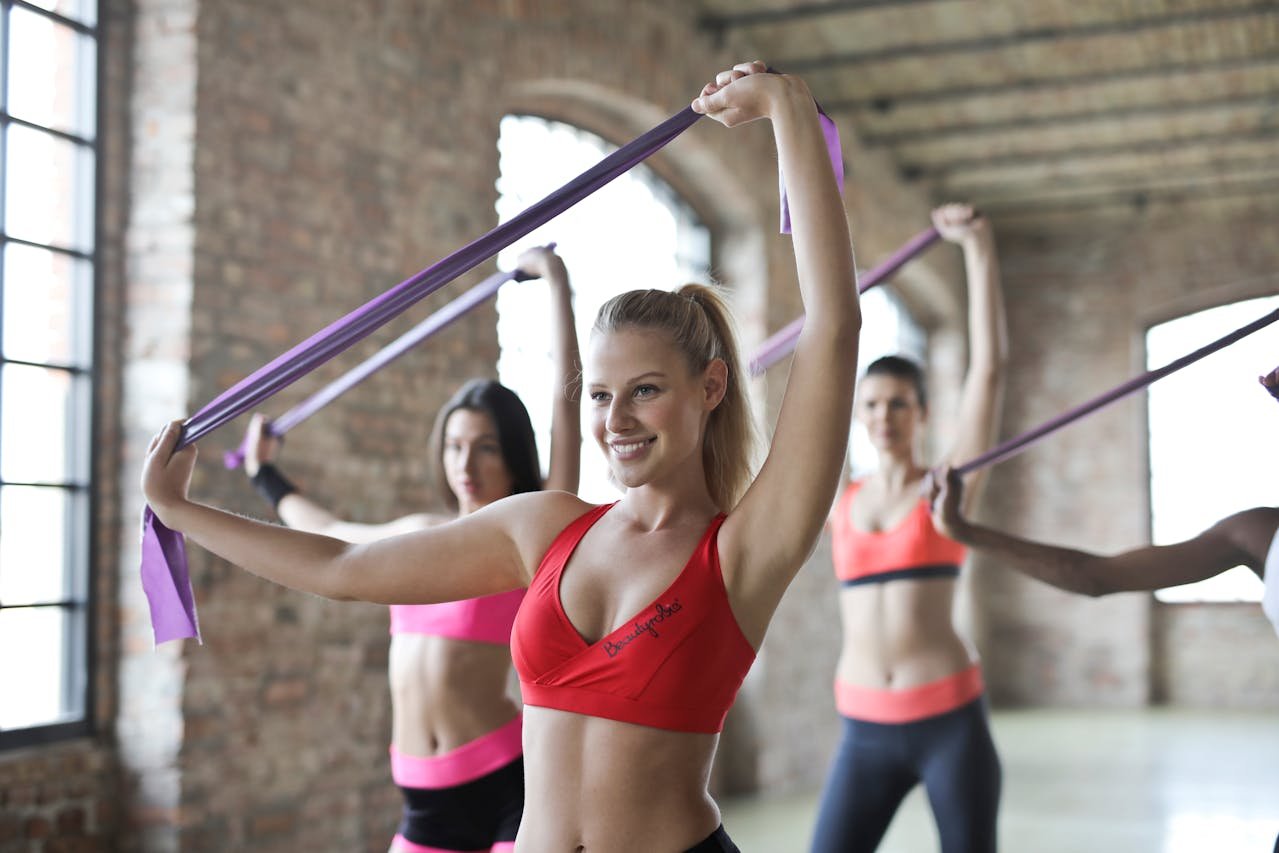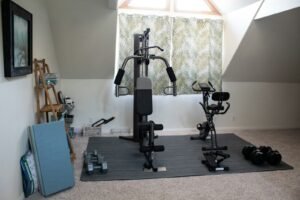Resistance Bands: The Underdogs of the Home Gym
Let’s take a moment to appreciate resistance bands—the quiet, unassuming heroes of the fitness world. They don’t clank like dumbbells, they won’t take up half your living room, and they won’t double as an expensive laundry rack (looking at you, abandoned treadmill). But make no mistake—these little stretchy wonders pack a serious punch for home workouts.
If you’ve ever scoffed at using resistance bands because they “don’t look challenging enough,” try looping one around your legs and doing a set of squats. I guarantee you’ll feel it. And if you don’t? Congratulations, you might secretly be a superhero.
But before you run out and buy the first set of resistance bands you see, let’s break down the different types—because, yes, there are various types. (Who knew, right?)
Types of Resistance Bands (Because One Size Does NOT Fit All)
1. Loop Bands: The Booty Burners
Also known as mini bands, loop bands are like the little troublemakers of the fitness world. You wrap them around your thighs, ankles, or arms, and suddenly, every exercise you thought was easy becomes a personal challenge from the universe.
✔ Great for: Glute bridges, squats, hip abductions (a fancy way of saying “make your butt hurt”)
✔ Perfect for small spaces: They fit in a drawer, a purse, or a pocket.
2. Tube Bands: The Free-Weight Impersonators
Tube bands have handles, making them great substitutes for dumbbells—except they won’t wake up your downstairs neighbors when you drop them. You can anchor them to a door, step on them, or attach them to furniture (safely, please—I’m not responsible for slingshotting yourself across the room).
✔ Great for: Rows, presses, bicep curls, and full-body workouts
✔ Bonus: Most come in sets with interchangeable resistance levels, allowing you to progress without needing to buy 50 different bands.
3. Therapy Bands: For When Your Muscles Need a Pep Talk
These flat, non-looped bands are the gentle souls of the resistance band world. Primarily used in physical therapy and rehabilitation, they help improve mobility, flexibility, and ease the return to movement after injuries. If you’re recovering, older, or don’t want to feel like your workout is an all-out war, these are for you.
✔ Great for: Stretching, mobility work, and convincing yourself to exercise without dread
✔ Perfect for: Seniors, beginners, and anyone recovering from injuries.
4. Figure-Eight Bands: The Weird but Effective Cousin
These bands look like an eight, and while they might not be as famous as loop or tube bands, they’re great for upper-body workouts. Whether you want to sculpt your arms, shoulders, or chest, these little guys provide smooth, controlled resistance, minus the gym’s intimidating weight machines.
✔ Great for: Shoulder presses, chest flies, and pretending you’re conducting an orchestra between reps.
Why Resistance Bands Deserve More Love
Now that we’ve covered the types, let’s talk about why you need them in your home gym setup.
1. They Take Up Less Space Than a Pair of Shoes
Resistance bands fit into the smallest spaces, unlike dumbbells or bulky gym machines. They roll up, fold up, and disappear into drawers. They also weigh next to nothing, meaning you can take them on vacation (not that I always work out on vacation, but the option is there).
2. They Make You Feel Muscles You Didn’t Know You Had
Have you ever done a glute bridge with a loop band? It’ll introduce you to parts of your body you didn’t realize existed. Unlike free weights, bands maintain constant tension on your muscles, resulting in increased activation and a more intense burn. (Read: You’ll feel it the next day. A lot.)
3. They’re Kind to Your Joints
Resistance bands are low-impact but high-results. Unlike heavy weights, they don’t put unnecessary stress on your joints. This makes them perfect for seniors, beginners, and anyone with joint issues (or anyone who has made questionable life choices, such as attempting a 300-lb deadlift on a whim).
4. You Can Train Anywhere, Anytime
Small space? No problem. Traveling? Toss them in your bag. Don’t want to put on shoes? No excuses are needed. Resistance bands are ideal for use in tiny apartments, hotel rooms, garages, and even outside (fresh air is good for you, I’ve heard).
Accessories That Make Home Workouts Even Better
Okay, you’ve got your resistance bands—what next? Accessories! (No, not the fashionable kind—unless you count looking cool while working out as fashion.)
1. Adjustable Dumbbells: Because a Whole Rack Won’t Fit in Your Closet
Adjustable dumbbells are the answer if you want the versatility of weights without the clutter. Instead of a giant set of dumbbells taking up space, you get one compact pair that adjusts to multiple weights.
✔ Great for: Strength training without sacrificing your living space.
2. Suspension Trainer: Your Doorway’s New Best Friend
A suspension trainer, such as the TRX, is one of the most versatile home gym accessories. You can do rows, squats, core exercises, and full-body workouts by anchoring it to a sturdy door or beam.
✔ Perfect for: Small spaces, full-body workouts, and people who like to use their body weight as resistance.
3. Yoga Mat: Not Just for Yoga
A good yoga mat is essential for any exercise requiring a cushioned surface. It also marks your “workout zone” in a small space so you don’t accidentally kick over your coffee table during burpees.
✔ Great for: Stretching, bodyweight workouts, and avoiding hard floors.
4. Jump Rope: The Ultimate Cardio Machine
Jump ropes are the most space-efficient cardio tool ever. They torch calories, improve coordination, and take up less space than a water bottle. Just be mindful of ceiling height—unless you want a very unfortunate home renovation. I admit I’m not very good at jump rope, but I’ll keep working at it.
✔ Great for: Quick, high-intensity cardio in tiny spaces.
Final Thoughts: Resistance Bands = Small But Mighty
At the end of the day, resistance bands deserve a place in every home gym. They’re affordable, versatile, easy to store, and surprisingly brutal (in a good way!). Whether you’re strength training, recovering from an injury, or just looking for a convenient way to stay active without buying a ton of equipment, bands are your best bet.
So, what are you waiting for if you haven’t already added a set to your home gym? Go grab some, and get ready to feel the burn. (And maybe cry a little during glute workouts, but that’s normal.)
Now, if you’ll excuse me, I have a resistance band workout to do… right after I convince myself to get off the couch.
What’s your favorite resistance band exercise? Let me know in the comments, as I’m always looking for new ways to torture my muscles.




